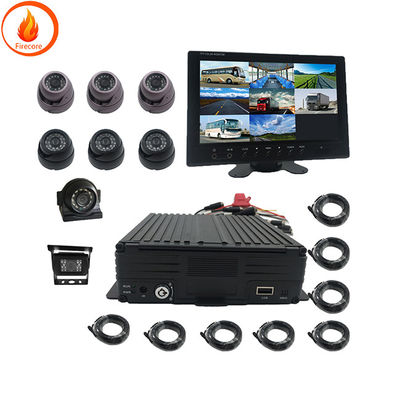Automotive cameras have become the cornerstone of modern automotive safety and autonomous driving technology. As the automotive industry moves toward advanced driver assistance systems (ADAS) and fully autonomous vehicles, the role of cameras in increasing safety, improving the driving experience, and enabling new features becomes increasingly important.
Types of Car Cameras
The future of automotive cameras is promising. Innovations in camera technology, such as solid-state design and increased miniaturization, will further improve their performance and reduce costs. Continued developments in artificial intelligence and machine learning will improve image processing and decision-making processes, pushing the limits of what automotive cameras can achieve.

Rear-View Cameras:In accordance with safety regulations in many areas, rear-view cameras assist in backing and parking by providing a clear view of the area behind the vehicle. They help prevent accidents involving obstacles, pedestrians and other vehicles that may not be visible through the mirror alone.
Surround-View Cameras: These systems integrate multiple cameras mounted around the vehicle to create a 360-degree view. This bird's eye view significantly improves parking and maneuvering in tight spaces by eliminating blind spots.
Front-Cameras: Mounted on the windshield or front grille, these cameras are critical for ADAS functions such as lane departure warning, adaptive cruise control and automatic emergency braking. They monitor the road ahead, detect lane markings, traffic signs and potential hazards, and assist in making real-time driving decisions.
Side-View Cameras: Side view cameras often replace traditional side view mirrors, providing a wider field of view and reducing aerodynamic drag. These cameras improve lane change safety by providing a clearer image of adjacent lanes.
Driver Monitoring Cameras: These cameras are located inside the vehicle and track the driver's attention and alertness. They can detect signs of drowsiness, inattention or unresponsiveness, trigger alarms and even take corrective action to ensure safety.
Technological advances and future technologies for automotive cameras
Automotive cameras have been significantly enhanced due to advances in camera technology and image processing. High Definition (HD) and Ultra High Definition (UHD) cameras provide superior image clarity, which is essential for detecting small objects and reading road signs. Wide Dynamic Range (WDR) and low-light performance features ensure that cameras can work effectively in a variety of lighting conditions, from bright sunlight to nighttime driving.
Advanced image processing algorithms, often driven by artificial intelligence (AI) and machine learning, enable real-time object recognition, tracking, and classification. These algorithms enable systems to differentiate between pedestrians, vehicles, cyclists and other roadway elements, thereby improving the accuracy and reliability of ADAS and autonomous driving systems.
Integration with Autopilot
Cameras are an important part of the sensor suite for self-driving cars. They complement other sensors such as radar and lidar by providing high-resolution visual data that is critical to understanding the vehicle's surroundings. While radar and LIDAR provide excellent depth perception and target detection in adverse weather conditions, cameras excel at recognizing and interpreting visual cues such as traffic lights, signs, and road markings.
In an autonomous driving setup, data from multiple cameras and other sensors are fused together to create a comprehensive 3D model of the environment. This multi-sensor approach ensures redundancy and robustness, allowing the vehicle to safely and efficiently navigate through complex scenarios.
Challenges and future directions
Despite rapid development, automotive cameras still face a number of challenges. Ensuring consistent performance in different weather conditions (e.g., rain, fog, and snow) remains a major hurdle. In addition, the integration of cameras with other vehicle systems and the processing of large amounts of data in real time require complex hardware and software solutions.
Automotive cameras are an integral part of modern automotive safety and autonomous driving systems. Their evolution, driven by technological advances and regulatory requirements, continues to change the landscape of the automotive industry, making driving safer and paving the way for the self-driving cars of the future.

 Your message must be between 20-3,000 characters!
Your message must be between 20-3,000 characters! Please check your E-mail!
Please check your E-mail!  Your message must be between 20-3,000 characters!
Your message must be between 20-3,000 characters! Please check your E-mail!
Please check your E-mail! 











